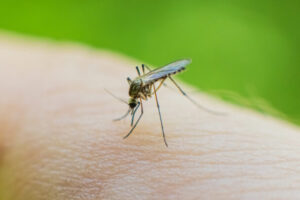
When NASA’s 2025 astronaut candidates arrived at the agency’s Johnson Space Center in Houston this fall, they embarked on a historic journey, united by a common mission to master the skills and teamwork that will define NASA’s next era of exploration. Selected from a pool of more than 8,000 applicants, the new class showcases a diverse range of backgrounds, including military test pilots, engineers, a physician, and a scientist. Each was inspired by pivotal moments in their lives that set them on a path to space.
These candidates will undergo nearly two years of rigorous training before becoming eligible for missions to low Earth orbit, the Moon, and eventually, Mars. Upon graduation, they will join NASA’s active astronaut corps, contributing to scientific advancements aboard the International Space Station and supporting Artemis missions that aim to extend human exploration farther than ever before.
A Milestone in Space Exploration
The announcement of the new class at Johnson Space Center on September 22, 2025, was marked as a significant milestone for space exploration. Center Director Vanessa Wyche celebrated the moment, highlighting the importance of this new generation of astronauts.
“Today is an exciting day for our nation and for all of humanity as we introduce NASA’s 2025 astronaut candidates – the next generation who will help us explore the Moon, Mars, and beyond,” Wyche said. “Each one of these candidates brings unique experiences and perspectives that reflect the diversity of America and the spirit of exploration that defines NASA.”
Behind their new blue flight suits are years of preparation and stories as multifaceted as the missions they will one day support. This development follows NASA’s continued commitment to diversity and inclusion, ensuring that the astronaut corps reflects the rich tapestry of the nation it represents.
Different Roads to the Same Horizon
Some of the candidates have built their careers in the air, where precision, communication, and teamwork are integral to every mission. Former U.S. Navy pilot and test pilot Rebecca Lawler exemplifies this path.
“All of these people are coming from different disciplines and levels of expertise, and you’re all working together to get science to fly,” she said. “That’s what excites me most – bringing those experiences together as a team.”
Meanwhile, Imelda Muller, an anesthesiologist and former U.S. Navy undersea medical officer, emphasized how her experience with experimental diving teams taught her the value of diverse backgrounds coming together under one mission, a concept she sees mirrored at NASA.
Muller recalls stargazing as a child, inspired by her grandfather’s stories from his time working on the Apollo program. This blend of imagination and familial legacy fueled her dream of becoming an astronaut.
The Human Side of Spaceflight
Anna Menon, a biomedical engineer and former flight controller, has witnessed the human side of spaceflight both from the ground and in space. She has supported astronaut health aboard the space station from the Mission Control Center in Houston and served as a mission specialist and medical officer aboard SpaceX’s Polaris Dawn mission.
Her experiences underscore the critical role of health and safety in space missions, highlighting the complex interplay between human physiology and the harsh environment of space.
Looking Ahead: The Future of Human Space Exploration
The selection of the 2025 astronaut class represents a crucial step in advancing NASA’s ambitious goals for human space exploration. As the Artemis program aims to return humans to the Moon and eventually send astronauts to Mars, these candidates will play a pivotal role in shaping the future of space travel.
According to experts, the diverse skill sets and backgrounds of these candidates will be instrumental in tackling the challenges of deep space exploration. The move represents a strategic effort by NASA to harness a wide array of expertise to ensure mission success.
As these candidates prepare for their roles in upcoming missions, the world watches with anticipation. Their journey not only marks a personal achievement but also signifies humanity’s collective aspiration to explore the unknown and push the boundaries of what is possible.
In the coming years, as these astronauts take their places in history, they will carry with them the hopes and dreams of countless individuals who look to the stars with wonder and curiosity. The next steps in this journey promise to be as thrilling and transformative as those that have come before.






